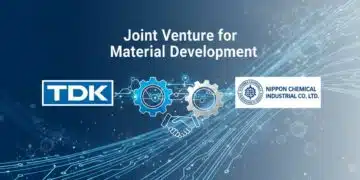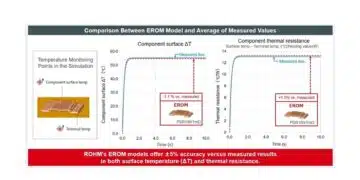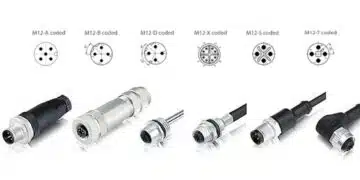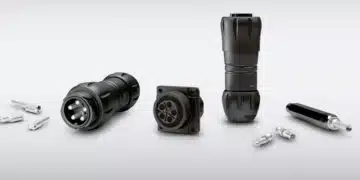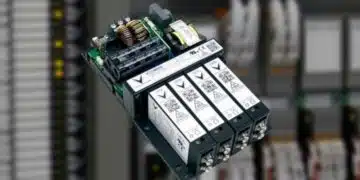source: Vishay news
MALVERN, Pa. — Feb. 25, 2016 — Vishay Intertechnology, Inc. (NYSE: VSH) today introduced a new series of surface-mount multilayer ceramic chip capacitors (MLCCs) optimized for high-voltage industrial and telecom applications. Providing increased reliability over standard devices, the Vishay Vitramon HV High Voltage Series features a robust serial electrode design and an extended voltage range up to 5 kV in four standard EIA sizes from 1812 to 2225.
The higher breakdown voltage of the MLCCs released today increases reliability against voltage spikes, while their serial electrode design reduces the risk of short circuits due to mechanical cracks. Manufactured in noble metal electrode (NME) technology with a wet build process, the devices are ideal for input and output filtering in power supplies and analog and digital modems, snubbing in power converters, and buffering in voltage multipliers.
Featuring a X7R dielectric, HV High Voltage Series devices offer a voltage range from 3000 VDC to 5000 VDC, capacitance from 180 pF to 15 nF, a temperature coefficient of capacitance (TCC) of ± 15 % from -55 °C to +125 °C, and an aging rate of 1 % maximum per decade. RoHS-compliant, halogen-free, and Vishay Green, the MLCCs offer 100 % matte tin plate terminations.
Device Specification Table:
| Dielectric | Case | Max. voltage (V) | Capacitance | |
|---|---|---|---|---|
| Min. | Max. | |||
| X7R | 1812 | 5000 | 180 pF | 3.9 nF |
| 1825 | 5000 | 330 pF | 10 nF | |
| 2220 | 5000 | 390 pF | 10 nF | |
| 2225 | 5000 | 470 pF | 15 nF | |
Samples and production quantities of the HV High Voltage Series are available now, with lead times of 11 weeks.




